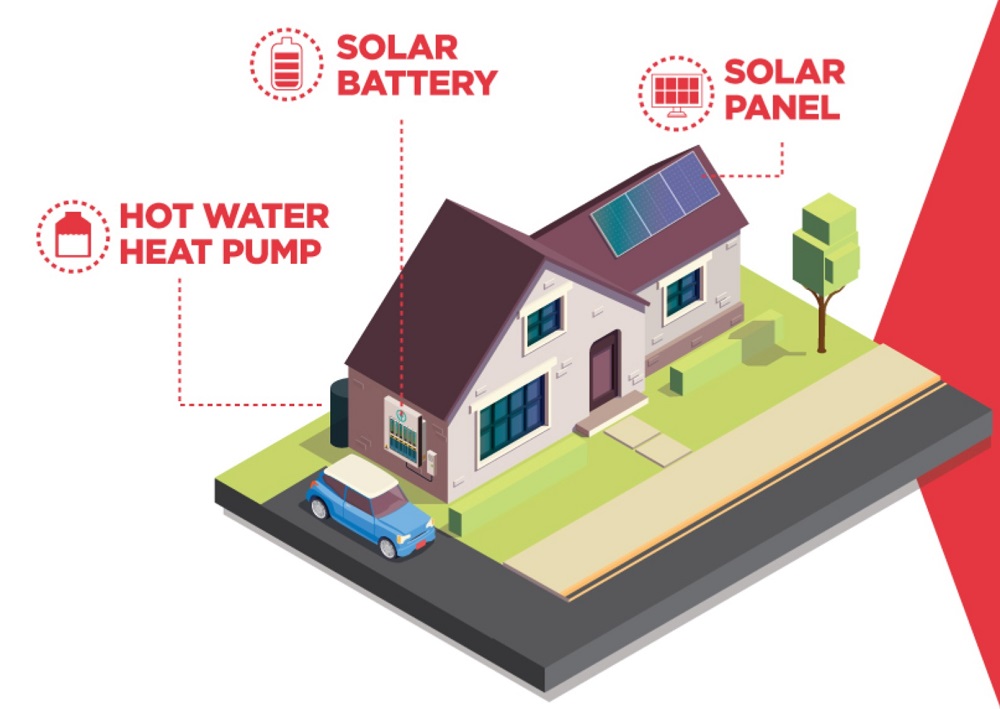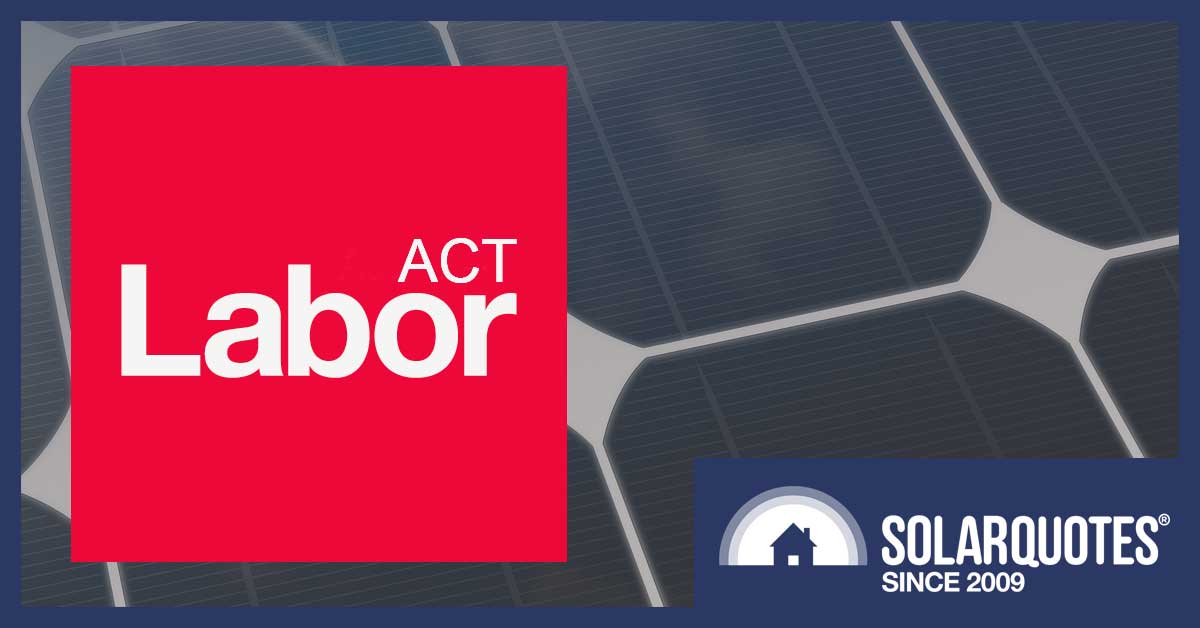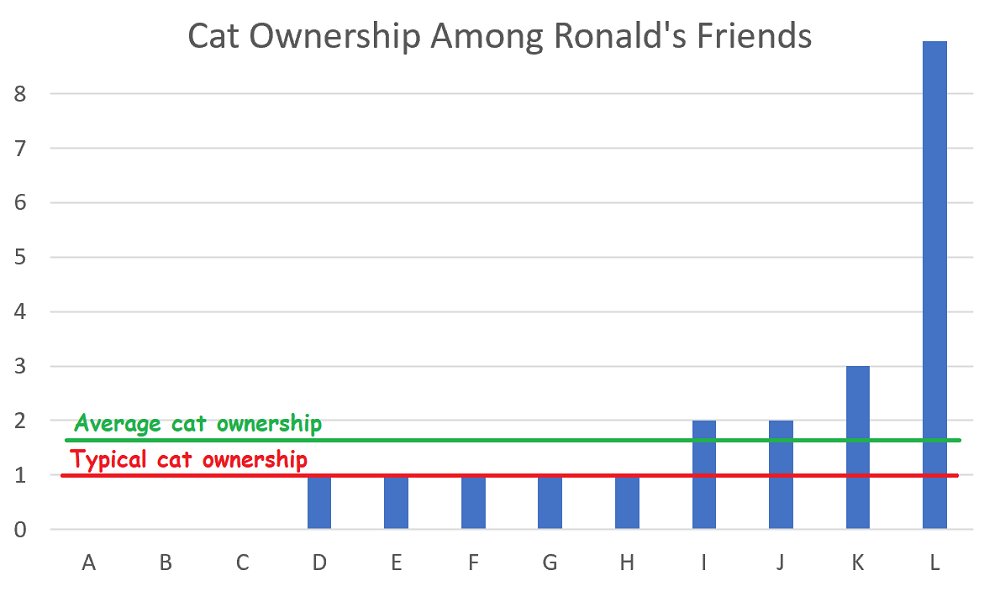ACT Labor will offer interest-free loans for solar power, home batteries, and heat pump hot water systems to Canberra households. But there is a catch. This will only happen if they win the election starting on the 28th of September and ending on the 17th of October.
The amount that can be borrowed will be from $5,000 to $15,000. Unfortunately, the scheme has just been announced and there’s not much detail available. The only solid information is what ACT Labor has put on their website, which doesn’t even say how long the loans will be for.
While I can’t be certain at the moment, it does look like the money can be borrowed for just solar power or just a heat pump and there is no requirement to buy a battery. This is important because even with the ACT’s hefty battery subsidy, which is the second-highest in the nation, they are still likely to lose normal ACT households money at the moment.
Update 7th August 2020: I forgot about the NT battery rebate so the ACT battery subsidy should be the third highest.
As state and territory governments can now borrow money at a fraction of a percentage point above zero, offering interest-free loans are a low-cost way to provide a subsidy — provided administration costs are kept to a minimum.

According to this ACT Labor graphic, trees in Canberra are now produced by Minecraft.
A $150 Million Scheme?
While ACT Labor doesn’t say this on their site, this Canberra Times article describes the loans as a $150 million dollar scheme, which is a huge amount of money. I assume this includes the maximum amount they’re willing to loan out and isn’t just administration costs. There are only around 180,000 households in the ACT so $150 million would come to $833 per home.
Provided administration and default costs are very low, $150 million would let them loan $10,000 to around 14,000 households or 8% of the total.
Money Is Cheap!
Interest rates have never been lower since Australia invented a national currency in 1910. Which was 9 years after we became a nation. Before that, we used either private money or rum. The Reserve Bank has cut the cash rate to just 0.25% and States and Territories can borrow for not much more than this. While I don’t know what rate the ACT can borrow at, I know the Victorian Government can borrow for three years at just 0.3% interest.
If the ACT can borrow at 0.5% and the length of the loan is 5 years then the interest on a $10,000 loan will only come to around $253. Even under ideal circumstances, households usually have to pay at least 3% interest and if things aren’t ideal it can be over 11% to borrow with a credit card. Because of the discrepancy in borrowing costs, it looks like a cheap way for the ACT to offer a subsidy, provided the scheme is run efficiently and very few borrowers go bankrupt and fail to repay their loans.
Fact-Checking The ACT Page
When I was in school we were told that the word “Canberra” meant “meeting place”. 1 But it turns out in the local traditional language it may actually mean “boobs“. If we run with the American English definition of that word, which is “fools” or “idiots”, then it’s pretty fitting given what many Australians think about Canberra.
To find out whether or not ACT Labor are boobs I decided to fact-check the limited amount of information they provide on their page about the loans.
I’ll start with what they got right and work my way down.
$1,000 Annual Savings With 5kW Solar
On the page, ACT Labor states:
“A 5kw system in an average household would provide around $1,000 in annual savings.”
This is correct. According to the SolarQuotes Solar & Battery Calculator 5 kilowatts of north facing solar panels can save over $1,000 a year in Canberra. More may be saved with a really good feed-in tariff, but I think it’s best to err on the side of caution and the $1,000 figure is fine.
I do recommend getting more than 5 kilowatts of solar provided there’s space on your roof. For most people with I recommend a minimum of around 6.6 kilowatts. Homes with single-phase power in the ACT can install more than this by export limiting the inverter to 5 kilowatts.
Heat Pump Info Can Be Improved
Heat pump hot water systems save energy but their advantages are a little oversold:
“Heat pumps use 55-80% less energy than standard electric storage or gas hot water systems.”
Unfortunately, the 80% less energy figure is almost certainly too high for Canberra. I understand why ACT Labor thinks they can be that efficient because there are two sneaky methods that deceptive heat pump manufacturers use to mislead people into thinking energy savings will be higher than they are in reality:
- The first is to report the efficiency of the heat pump while neglecting to mention the unit also uses energy for other purposes such as running electronics and deicing cycles. They also fail to mention efficiency can be much lower in a cold Canberra winter.
- The second method is to just flat out bullshit.
If there is a heat pump hot water system out there that uses 80% less energy compared to a standard hot water system for a typical Canberra family over a year, that would be great, but I’m definitely not aware of one able to do that.
“An average household will save up to $635/year with a hot water heat pump.”
What? My god! How much hot water does the average Canberra household use? If ACT Labor is assuming — incorrectly — that heat pump hot water uses 80% less electricity that means the average household in the ACT spends $794 a year heating water. That’s around 10 kilowatt-hours a day when the average residential consumption is around 22 kilowatt-hours a day.
This extreme figure may actually be correct and what the average household uses, but in this case, I think ACT Labor should use the figures for the typical household and not the average household. Because there are a lot of rich people in Canberra, average household electricity consumption is likely to be considerably higher than the typical household uses. Savings for a typical household should be given, otherwise run of the mill Canberrans may be misled into buying heat pump hot water systems that don’t save them money.
While the difference between average and typical is a little tricky to grasp, I think it’s a concept a Labor political party should definitely wrap their heads around.
Itty Bitty Money Saving Batteries?
This is the strangest thing I found while fact checking:
“For households that already have a 5kw solar system, a battery storage solution in Canberra with 3kwh capacity could provide significant annual savings.”
No, it couldn’t! While I hope I’m wrong about this, I really doubt anyone is selling 3 kilowatt-hour batteries in Canberra that can save households any money at all, let alone provide significant savings. I’m certainly not aware of any little home batteries here in South Australia able to do that and we have the biggest battery subsidy and the highest electricity prices in the country. So I’m going to call bullshit on this.
They’re just lucky I don’t call shenanigans since that’s much worse.
My guess is ACT Labor believes money-saving 3 kilowatt-hour batteries are things that exist because they have assumed a spherical cow. Or they simply grabbed someone else’s spherical cow and ran without first checking if it had a leg to stand on.
By spherical cow I mean they have made simplified assumptions that don’t hold true in reality. Many years ago, before the original Powerwall was even a gleam in Elon Musk’s eye, some clever clogs estimated the most cost-effective battery size for Australian homes was around 3 kilowatt-hours. But they assumed the battery cost per kilowatt-hour was constant and this is not the case. Because similar supporting electronics are required whether a battery is 3 kilowatt-hours or 13 kilowatt-hours, small batteries cost considerably more per kilowatt-hour than large ones and so aren’t able to save households money at the moment. My guess is ACT Labor either went with the very old and incorrect assumption or used a new calculation that made the same mistake.
A Final Nitpick
“kw” & “kwh”
Since I said I was fact-checking, I suppose I should point out the abbreviation for kilowatt is kW, not kw and for kilowatt-hour it’s kWh, not kwh. I am quite happy to forgive ACT Labor for these honest mistakes, but there are people out there who never will.
Zero Interest Loans — A Good Way To Get Solar Installed
Because interest rates are so low, offering zero-interest loans looks like a cost-effective way to encourage people to do worthwhile things such as install rooftop solar power systems. I just hope that when the nitty-gritty details are available it doesn’t turn out to be a stinker of a plan that comes with kilometres of red tape that bloat costs and waste money.
They’ll also have to fix their current page on it. They need to provide more accurate and more useful information on heat pumps and definitely have to get rid of that nonsense about 3 kilowatt-hour batteries saving households money. Either that or they need to give me some of whatever they’ve been smoking. (It’s for a friend.)2
Footnotes
- I come from Toowoomba. No one actually knows what “Toowoomba” means because the Brits who rocked up there 200 years ago didn’t bother to check before kicking the Australians off the land or flat out killing them. Of course, it wasn’t called Toowoomba when I was a kid. It was actually called Wonwoomba. It only got its current name after I left town one day and all the signs were mysteriously changed so I had a hell of a time finding my way back. ↩
- A friend with glaucomas. HUGE glaucomas. ↩



 RSS - Posts
RSS - Posts



“The only catch”!!!
That’s not a catch .. it’s one of their election campaign promises ….. of course they won’t be able to offer it if they don’t get elected.
It will be interesting to find what response, if any, comes from the WA Greens and my local lower house MP (WA state government – Labor), to my query as to whether their respective parties will be making similar offers (of the proposed interest free finance, AND the existing battery subsidy/rebate) for the March 2021 WA state election, especially, given that WA is, I believe, “the one state/territory in mainland Australia where the state legislature does not financially support domestic rooftop photovoltaic systems with battery storage”.
Don’t forget the little enphase batteries but their peak power delivery sucks and they’re still to expensive to make “significant savings”. Well they would if you didn’t pay back the loan I guess…
when it comes to grants and loans to save energy, why is nobody considering grants/loans for better insulation? This is definitely low-hanging fruit. It seems we will be haunted for ever by the pink batts fiasco.